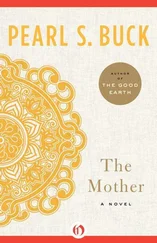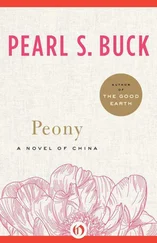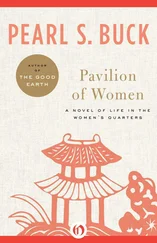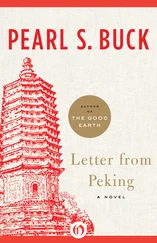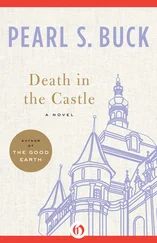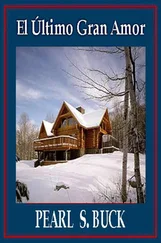Many friends have helped me know my country. Dorothy Canfield, for example, means Vermont to me, and knowing her inspired me to build our small house, our sons learning by helping to build it, Forest Haunt in the Green Mountains. There we face the Wilderness. Much as I love people and find my life among them, I like sometimes to sit in our forest-circled cabin and know that for thirty-five miles to the north of us, there is no man or woman living, but only woods and brooks and silence. Each state in this great union lives for me not only in landscape and experience, but in the people who belong there and have taken me with them to their homes, if not in body, then in letters.
Of my American family, next to husband and children, I remember my dear mother-in-law, now dead. Reared in China, I could not but respect her position in my life. It was essential to me that she like me and approve me, but what if she had not? She did, however, and from the first the relationship was what it should be, honor from me and love, and from her an affection, kind and easy. I do not know why at this moment I see her on a certain morning here at our farmhouse, where she often visited us, but would never live, somewhat to my hurt at first, for I would have liked to have her live with us and give our children the benefit of a grandmother in the house, the grandfather being dead and so beyond the reach of our daily life. But no, she would only come for visits, and on one such morning, as we lingered over the breakfast table after the children had finished and gone away, we talked of England and the royal family in whom, as one born in England, she took much personal interest. She was a handsome white-haired lady, substantially built and always well dressed and cheerful, afraid of nothing except mice. She sat with her back to the big window at the end of the table, my husband on one side of her and I on the other, and behind her the sunlight fell upon the polished red brick floor.
Suddenly, as she talked, a kangaroo mouse darted out from the logs piled in the fireplace which was not lit, and without an instant’s hesitation, the fragile lively mite rose upon its hind legs, its front paws waving like little hands, and began to dance in the sunshine. The sight was so exquisite, the dance so minutely dainty and graceful, that my husband and I caught each other’s glance, longing to speak. Yet did we speak, the mouse would be revealed to our mother, and then the dance be broken. In silent ecstasy we watched while our elder talked, until the mouse had finished its dance and fluttered back into the fireplace. I see the scene yet, like a painting on a wall, except that no painting could convey the fairy movement of the little wild thing behind our mother’s chair.
And still another memorable picture in my intermingling worlds is of a cold November day in New Jersey, the twenty-third, to be exact, and at Freewood Acres. The occasion was the consecration of a Lama Buddhist Temple. Actually it was a garage made into a temple, and there is something strange and fascinating about the very idea of such a transformation, the first in the history of our country, I am sure. But it was a true temple, for all that, and made by a devout people now becoming American citizens. They were the anti-Communist Kalmuks, more than a hundred of them, men, women and children, and they had worked on the building themselves, the woodwork, the masonry, the plastering. The asphalt shingles they had painted a bright yellow, the sacred color of Buddhism, but over the door was a huge American flag as well as the red and yellow flag of their religion.
The Kalmuks are the descendants of the Mongolian warrior-followers of Genghis Khan, who conquered much of Asia and Europe in the thirteenth century. They settled on the steppes between the Don and the Volga rivers, and after the revolution in Russia they were formed into the Kalmuk Socialist Soviet Autonomous Republic. In spite of this fine name they never were friendly with the Kremlin and during the Second World War many of them were taken, or allowed themselves to be taken, by the German armies, and thus they found their way into DP camps, whence they were brought to the United States, mainly through the efforts of Protestant Christians. In New Jersey now they work in carpet factories, on farms and on construction jobs.
We arrived early that day, the air very frosty and cold, and were met by friendly representatives who led us into a crowded small room in somebody’s house, made festive as a guest room, and there we were offered cakes and tea. Though it was so early, the entire population, even the children, looked clean and rosy, the babies amazingly fat and round-faced and wrapped like little papooses against the cold. After two hours or so the services began. We were invited into the tiny temple and given places of honor behind ropes at the right side of the altar.
How strange the familiar Buddhist gods looked to me that day! I had never seen them before in an American setting, or even in so simple a building, but here they were, sitting in a row behind the altar, and before them were heaped the offerings of the people, food of every sort including boxes of crackers and breakfast cereals, and I daresay the gods had never been given such gifts before, either. Of course, actually, they were gifts to the lamas. But it was all very solemn and to me inspiring as well as touching. My old friend, the Dilowa Hutukhtu, who is the eighteenth recorded incarnation of the Indian saint Tolopa and is therefore the primate of all the Mongol Buddhists in our country, officiated in the brief half-hour ceremony. To his right and slightly lower sat nine lamas, who had come, I think, with the Kalmuks. The Dilowa himself is a tall man, now growing old, and his wide Mongolian face is as peaceful here as though he were not an exile. On that day in the little garage temple he was quietly radiant, though once he had been the head of nine hundred lamas in three great lamaseries, one in Outer and two in Inner Mongolia. But that was in the days before the Communists drove him out and before Owen Lattimore saved his life.
Now in the new little temple he put on his yellow silken hat, which signified his rank, comparable, perhaps, to the red hat of a cardinal in the Catholic Church, the Dalai Lama in Tibet being comparable to the Pope. He sat cross-legged on a high seat when we came in, then he rose and walked slowly to the altar, his robes flowing about him. He sounded a delicate small bell, and the other lamas gathered beside him and in chorus they began the sacred chants. When this part of the service was ended the Dilowa made a short sermon, and these, translated, are among the words he spoke:
“This day, by the saving grace of Buddha, is a day of great rejoicing for the completion of a deed of blessed merit.
“All ye Kalmuk Mongols of pure faith did succeed in escaping from the dreadful circumstances of Red Russia, where false beliefs prevail, and did come to this great America where peace and happiness are broadly based and you have built a new temple in the pure sincerity of your devotion, to affirm your faith in the Buddha, which you held from of yore, and now invoke its consecration. That you have founded a congregation of the faith, that verily this day you have completed a palace of the Lord Buddha to be his dwelling, to uphold and accomplish that which is in the heart of Buddha, a place of prayer and sacrifice, a place for the sowing of the harvest of blessedness, is your reward because in previous incarnations you were valiant in the faith….
“Upon all of you, the Kalmuk Mongols, who, in raising this temple, have perpetuated in it the name of Arashi Gimpling, your temple in your ancient homeland, I invoke this blessing: That, having fulfilled all that you sought and all that you hoped for, in the fulness of the Law and to your heart’s desire, your happiness may be overflowing, your words of merit ever increasing, your very rebirth bring you together with the religion of the Buddha, and that speedily and in peace and without toil you may be united with the pure saints on high.”
Читать дальше


